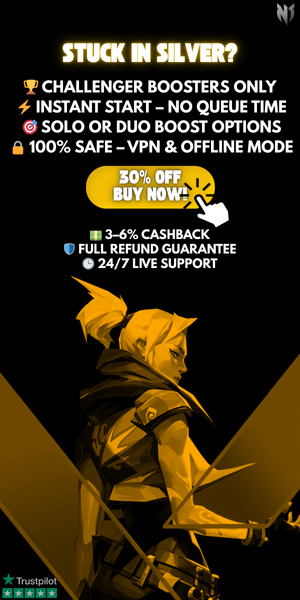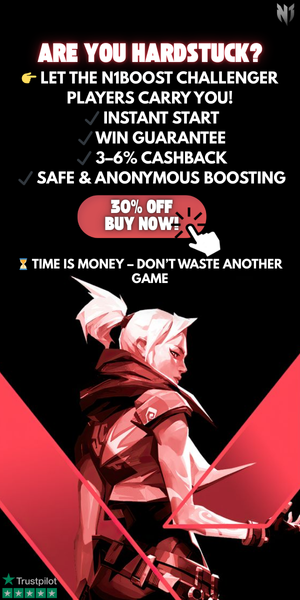Red Flags When Assessing Account Value: Spotting Inflated Estimates
Introduction
When buying or selling Valorant accounts, one of the most important aspects is understanding the true value of the account. Unfortunately, inflated estimates and exaggerated claims are not uncommon in the marketplace. Knowing how to spot red flags and avoid paying too much or getting scammed can save you time and money. In this blog, we’ll cover the most common red flags to watch out for when assessing Valorant account value, helping you make informed decisions when buying or selling accounts.
Why Spotting Inflated Estimates Matters
When buying or selling an account, inflated estimates can lead to:
- Overpaying for an account: You could end up spending more than the account is worth, leading to financial loss.
- Misleading claims: Sellers may exaggerate the value of their account to make a quick sale, offering you unrealistic expectations about what you’re getting.
- Risk of scams: If an account’s value is misrepresented, it could be a sign of an attempt to scam or mislead you.
Being able to spot inflated estimates is key to ensuring you’re getting what you pay for and not falling victim to unscrupulous sellers.
Red Flags to Watch for When Assessing Account Value
1. Unusually High Asking Price for Common Items
A common tactic used by sellers to inflate an account’s value is by asking for an exorbitant price based on common or widely available skins. Be cautious if the account you’re interested in has common skins or widely available cosmetics and the seller is demanding a high price.
- Why It’s a Red Flag: Common skins and in-game rewards (like the Valorant Champions gun buddies or seasonal cosmetics) do not typically add significant value to an account. Overpricing based on these items is often an attempt to inflate the account's worth.
- What to Do: Cross-check the price of the skins and items the seller claims to have and compare it with what they’re asking for the account.
2. Accounts with Few High-Value Skins but Unrealistic Pricing
Sometimes, accounts will feature a few rare skins but are priced much higher than their actual worth. These accounts may seem like a good deal on the surface but are priced too high given the limited number of valuable skins.
- Why It’s a Red Flag: Rare skins like Radiant or Valorant Champions cosmetics add value, but a few skins alone will not justify an inflated asking price. Account value is also determined by rank, match history, and player progress.
- What to Do: Look at the overall account progress—not just the skins. A rank boost or inflated win rates could suggest that the account’s pricing is inflated compared to its actual value.
3. Lack of Proof of Ownership or Account History
A major red flag when assessing an account’s value is the seller’s inability to provide proof of ownership or any account history. When purchasing a Valorant account, you want to be sure the account has not been flagged, suspended, or compromised.
- Why It’s a Red Flag: Without proper verification of the account’s history or ownership, you may be buying an account with hidden issues. Sellers who refuse to share account details or provide proof of ownership could be hiding issues like bans or irregularities.
- What to Do: Always ask the seller for proof of their ownership and account history. A legitimate seller should be able to provide this information without hesitation.
4. Over-Emphasis on Rank and Lack of Other Value Indicators
Some sellers might over-emphasize the rank of an account, especially Radiant or Immortal, as the primary reason for its high value. While rank is important, it’s not the only factor in determining an account’s worth. An account’s skin collection, win rate, and match history should also be factored in.
- Why It’s a Red Flag: If the seller is trying to sell an account solely based on its rank, there might be little value in the skins or cosmetics, which are usually what drive long-term value.
- What to Do: Check the overall makeup of the account. A high rank with low skin diversity or minimal cosmetic content may indicate an inflated price that doesn’t match the overall value.
5. Unverifiable Claims of Rare Cosmetics or Exclusive Skins
Some sellers will claim that their account has rare cosmetics or exclusive skins that are no longer available. While this may be true, be wary of unverifiable claims, especially when the price seems unusually high.
- Why It’s a Red Flag: Sellers may falsely claim that an account has exclusive or hard-to-get skins, leading you to believe that the account’s value is higher than it really is. These claims are often difficult to verify without account history or proof.
- What to Do: Cross-check any rare skin claims and ask for proof of acquisition. If the seller cannot verify the legitimacy of these skins, it’s likely that the account is being overpriced based on false claims.
6. Sellers Who Push for Immediate Transactions
Be cautious of sellers who pressure you into making an immediate decision or purchasing an account quickly without proper verification. High-pressure sales tactics are a common tactic used in scams or inflated pricing.
- Why It’s a Red Flag: Legitimate sellers typically provide enough time for buyers to review the account, ask questions, and verify the information. Pushy sales tactics are often used to manipulate buyers into purchasing an account without fully assessing its value.
- What to Do: Take your time and do thorough research before making any purchase. If a seller is rushing you to buy, it could indicate that they’re trying to hide something.
How to Protect Yourself from Inflated Account Prices
To avoid being tricked by inflated Valorant account prices, consider these tips:
- Do Your Research: Use platforms like ValorantValue.com to track account value trends and gain insights into realistic prices.
- Compare Similar Accounts: Look for accounts with similar skins, rank, and progress to compare prices and assess whether an account is reasonably priced.
- Ask for Detailed Proof: Always ask for account history and proof of ownership before making any purchase. Verify claims of rare skins or event-based items.
- Avoid Quick Transactions: Don’t rush into a purchase. Take your time to evaluate the account and ensure the price matches its value.
Conclusion
Spotting inflated estimates and overpriced Valorant accounts can be difficult, but by knowing the red flags, you can protect yourself from making costly mistakes. Always verify ownership, check for realistic pricing, and make sure that the value of the account aligns with its skins, rank, and progress. By following these tips, you can ensure that you’re buying or selling an account at a fair price, without falling victim to inflated claims.
Track Account Value with ValorantValue.com
To better understand Valorant account values and avoid inflated estimates, visit ValorantValue.com. This platform helps you track your account’s worth based on skins, rank, cosmetics, and more.
Tags
admin
Author



